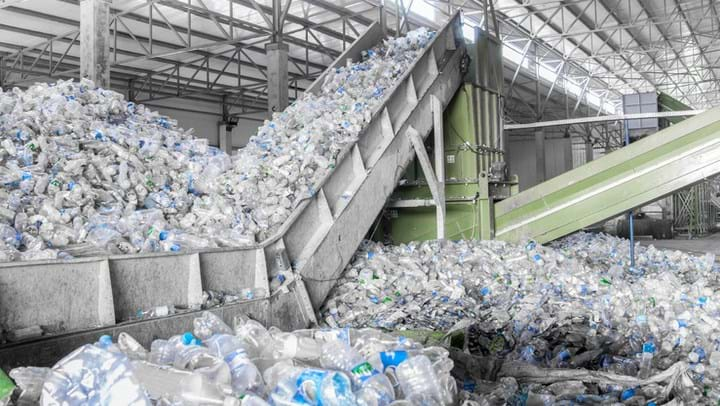Report identifies challenges towards a plastics circular economy

THE European Technology Platform for Sustainable Chemistry (SusChem) has released a report identifying challenges and potential solutions to meeting the EU’s plans to have all plastic packaging recycled or reused by 2030.
SusChem’s report, Plastics strategic research and innovation agenda in a circular economy, was released in response to the European Commission’s Strategy for plastics in a circular economy. The EU uses around 50m t/y of plastic and there are 60,000 companies in the European plastics industry. In 2016, 27m t of plastic waste was collected of which 7.4m t was sent to landfill, 8.4m t was recycled, and 11.3m t were used for energy recovery, which shows the need for a plastics circular economy.
The new report was released along with the European Chemical Industry Council (Cefic), PlasticsEurope, European Plastics Converters (EuPC), the European Composites, and Plastics and Polymer Processing Platform (ECP4). It identifies current challenges in plastics design, recycling, and the use of alternative feedstocks. It also outlines potential solutions and the future research needed to fulfil the objectives of the EU’s plastics strategy.
Plastics design
Improving the overall design of plastics would lead to less waste. Certain plastic products need to preserve their structure for a long time, such as in the aerospace industry. During manufacturing and use, damage occurs that can’t be repaired and leads to high scrap rates of up to 20-30% depending on a part’s complexity. This issue could be addressed with self-healing polymers.
End-of-life considerations need to be taken into account during the design stage. Different components have different characteristics and lifetimes which can lead to a product being discarded when certain components could still be useful. A solution to this could be improving the design of adhesives to allow for easy disassembly when required. In addition, polymers can only be recycled a finite number of times due to a loss in properties such as clarity and strength. Work is required to extend the number of times polymers can be recycled.
While more environmentally friendly plastics can be made from biological feedstocks rather than petrochemicals, more research is needed to improve their barrier and anti-fouling properties.
Recycling
The report identified several challenges related to the recycling of plastic. It can be difficult to detect the different components in multilayer materials as each has different properties. This can be done with optical spectroscopy, but the technique needs further development. Separating different materials is also difficult, particularly if inks are printed directly onto the plastic or if additives such as flame retardants have been used. Some techniques exist for ink removal but need further development to reduce their cost and the need for solvents. Food contamination can also present a problem for plastic recycling.
Detecting compostable plastics in multilayer materials is challenging, and biodegradable polymers should be collected separately. Claims made by companies regarding biodegradability or compostability should also comply with appropriate standards.
The high cost of utilities and low quality of the final product is an issue for thermochemical recycling. Advanced thermochemical recycling needs further research, such as chemical recovery through depolymerisation.
Plastic waste could be used for syngas, but gasification purification technologies need to be developed to remove hazardous chemicals from syngas. The report called for a study to be performed on existing waste streams and how they can be fed into existing processes.
Alternative feedstocks
Agricultural residues can be used as biomass feedstock to create bio-plastic, but challenges exist with the biomass-to-product conversion efficiency.
Using captured CO2 is also an alternative feedstock for plastic production, but the challenge is to get cost-effective access to the CO2.
“The plastics industry is committed to increasing the resource efficiency of its production processes and face the challenge of closing the circularity loop,” said Markus Steilemann, Chairman of SusChem. “The new research and innovation agenda gives fresh impetus on the strongest way to drive progress along plastics value chains by means of collaboration.”
Recent Editions
Catch up on the latest news, views and jobs from The Chemical Engineer. Below are the four latest issues. View a wider selection of the archive from within the Magazine section of this site.




